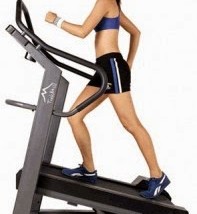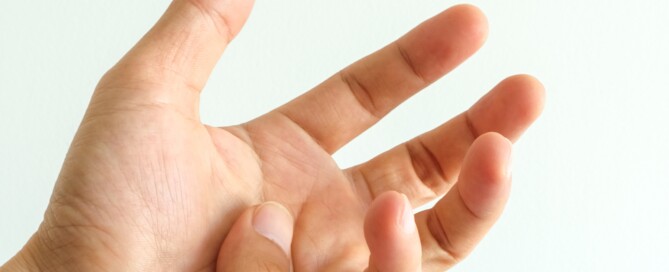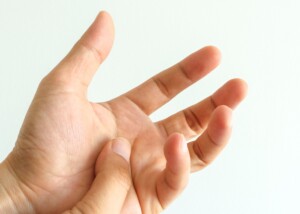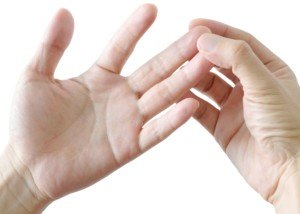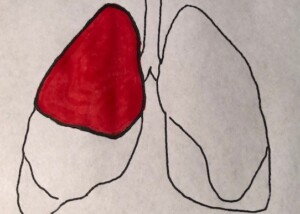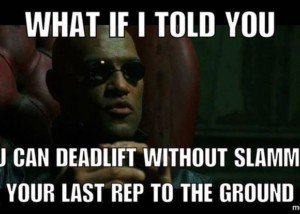Can OSA Ever Be Diagnosed without a Sleep Study?

Can obstructive sleep apnea ever be diagnosed without a sleep study in which someone sleeps through the night with wires attached to their head and other devices recording their vitals?
Diagnosis of OSA is not the same as detecting or witnessing it.
“Actually, an astute bed partner can witness the apneas sometimes,” says Daniel Rifkin, MD, a sleep medicine expert at the Sleep Medicine Centers of Western New York.
People have observed a bed partner or other family member’s breathing literally cease for up to a minute.
They have witnessed this occur over and over again during overnight sleep or even a nap.
When the breathing resumes, it’s often accompanied with a gasp or snort.
The suspicion for OSA should be high in people who exhibit repeated stopped breathing during sleep, and especially if snorts and gasps, or what seems like labored breathing, is witnessed.
The suspicion can be confirmed only with a sleep study.
“The sleep study is not only important in diagnosing the presence of sleep apnea, but it’s most helpful in determining severity,” says Dr. Rifkin.
“We approach treatment differently for different levels of obstructive sleep apnea.
“Mild sleep apnea is defined by greater than five episodes of sleep apnea per hour but less than or equal to 15 events.
“Moderate sleep apnea is between 15 and 30 events per hour, and severe sleep apnea presents with greater than 30 events per hour.
“I’ve had many patients with even more than 100 events per hour.”
Sleep Apnea Myth
A myth is that thin people are immune to OSA. This is absolutely NOT true, because smoking and drinking can promote OSA.
In addition, a natural excess of pharyngeal tissue, a large tongue base and a narrow airway can also give rise to apnea events.
 Dr. Rifkin is board certified in both neurology and sleep medicine. He also treats insomnia, RLS and narcolepsy.
Dr. Rifkin is board certified in both neurology and sleep medicine. He also treats insomnia, RLS and narcolepsy.
 Lorra Garrick has been covering medical, fitness and cybersecurity topics for many years, having written thousands of articles for print magazines and websites, including as a ghostwriter. She’s also a former ACE-certified personal trainer.
Lorra Garrick has been covering medical, fitness and cybersecurity topics for many years, having written thousands of articles for print magazines and websites, including as a ghostwriter. She’s also a former ACE-certified personal trainer.
.
Freepik.com, katemangostar
Source: sciencedaily.com/releases/2011/06/110613104255.htm
sscpywrt26
How to Prevent Migraine Headaches from Disrupting Sleep

Migraine headaches can interfere with sleep, but there are numerous things you can do to finally get a good night’s sleep, without the interruption of the migraine headache pain.
“Migraine headaches can happen at any time of the day or night,” says Daniel Kantor, MD, director of the Neurology Residency Program, Florida Atlantic University.
“We are often so busy during the day that some people are ‘too busy’ for the headache during the day (they have it but just don’t notice it), and only really feel the pain at night.”
And that’s when the problems begin, when the migraine headache sufferer tries to fall asleep.
The first tip for falling asleep despite migraine headaches: “Sleep hygiene means doing things right to make the bedroom an environment conducive to sleep,” says Dr. Kantor.
“The bedroom is for two things: sleep and sex. It is not a place for TV watching, eating, etc. — these things are stimulating and will keep you awake and make it harder to fall asleep.”
You don’t want the bedroom to be a conditioned stimulus for staying awake.
The next thing is to make sure your doctor is doing all that’s possible to lower the intensity of your migraine headaches, since a good night’s sleep will be impossible if the pain is bad enough.
Dr. Kantor advises: “Try to relax before falling asleep — breathing exercises work great, as does mindful meditation.”
Wind down as bedtime approaches; avoid stressful or stimulating activities like heavy computer work.
The next sleeping tip for migraine headache sufferers is to “take a warm bath 45 minutes before your bedtime — as your body cools down, you get sleepier and sleepier,” says Dr. Kantor.
He also suggests taking a medication prior to bedtime that’s designed to subdue migraine pain, as these can induce a sleepy feeling.
“Go to bed at the same time every night, so that your body gets used to a full night’s rest.” This will help reset your body’s circadian rhythm.
“Make sure to talk to your doctor about your sleeping problems — they may be related to other problems, like anxiety, stress, depression and even sleep apnea and narcolepsy.
“Sleep apnea is important, not only because it makes you feel less rested, but also because it causes chronic migraines and can lead to an increased risk of heart attack and stroke.”
Being overweight, with a short thick neck, are risk factors for obstructive sleep apnea, though thinner people including children (a tiny percentage) can have this treatable disorder.
If you suffer from migraine headaches, it is absolutely crucial that you persistently try to remedy any sleeping problems. Dr. Kantor says, “We know that lack of sleep can trigger migraines.”

Dr. Kantor is also President Emeritus, Florida Society of Neurology.
 Lorra Garrick has been covering medical, fitness and cybersecurity topics for many years, having written thousands of articles for print magazines and websites, including as a ghostwriter. She’s also a former ACE-certified personal trainer.
Lorra Garrick has been covering medical, fitness and cybersecurity topics for many years, having written thousands of articles for print magazines and websites, including as a ghostwriter. She’s also a former ACE-certified personal trainer.
.
Top image: Shutterstock/Supawadee56
What Exercises will Help Burn Fat in the Butt?

If your behind is huge and mushy, you need exercises for a fat butt that will shrink and tighten your rear-end.
The majority of a big rear-end is fat, not muscle. (more…)
Can Holding onto the Treadmill Harm the Hips and Posture?
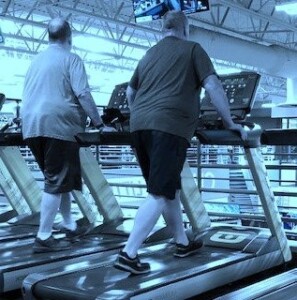
Do you hold onto the treadmill? Are you aware this may ruin your posture & eventually cause hip problems?
It’s bad for the hips & spine, especially for older people. (more…)
Pinky Tip Suddenly Numb? Cause other than Elbow Nerve

This is about the TIP of your pinkie being numb, rather than the entire finger.
Are you freaking over sudden numbness in the tip of your pinkie? (more…)
Should We Blame Scary Skinny Celebs on Eating Disorders?

We really can’t be putting all the blame on “scary skinny” celebrities on the rash of eating disorders like anorexia nervosa.
A teen girl with anorexia nervosa, and more so her alarmed family, may blame the so-called scary skinny female TV and movie stars, fashion models and recording artists on the eating disorder.
“All of us are exposed to magazines that glamorize thin celebrities, but not everyone goes on to develop an eating disorder,” says Linda Centeno, PhD, clinical psychologist, and assistant director of the Koch Center in NJ that specializes in eating disorder treatment.
“Current research postulates that the development of an eating disorder is multi-factorial.
“The confluence of genetics, biology, trauma, deficiency in coping abilities, family issues, and temperament may all contribute to one developing an eating disorder.”
Why are scary skinny celebrities such an easy target for blaming as the cause of anorexia nervosa?

Well, nobody wants to blame a family member for causing a life-threatening psychiatric disorder.
A person may be part of a dysfunctional family and actually believe their family is picture perfect.
But someone has to be blamed for the eating disorder. The family may blame the patient entirely, or, they may be seeking an easy scapegoat: the latest thin glamour star to grace the cover of People Magazine.
Even people who don’t personally know an anorexic often blame Hollywood for the increased diagnoses of eating disorders.
How convenient it is to point to Angelina Jolie and declare, “That’s the cause!” Thanks to the Internet, it’s super easy to pick apart any woman’s body.
Though a teen or woman with anorexia nervosa might outright state, “I became obsessed with dieting when I decided I wanted a body like Taylor Swift’s,” this doesn’t mean that’s the cause.
“Oftentimes in clinical practice, we see that someone who is primed to develop an eating disorder is someone who may have gotten the message that it is more important to please others (vs. themselves), be as ‘perfect’ as possible, and not show (or attend to) one’s emotions,” says Dr. Centeno.
“In turn, these individuals may find coping or comfort in the ability to control their food intake.
“Oftentimes, people who have had an inability to vocalize their struggle are more apt to use food to cope because it is something they can control and they are able to hide (at least initially).
“Very often, the person is unaware of what is bothering them and these feelings become displaced onto food.
“For example, instead of being aware of being upset about something traumatic that has happened, the person may instead focus on how a type of food may ‘make them fat’ or ‘how many calories they ate for dinner.'”
This remolding of perspective then gets out of hand.
Another point to consider: Not all girls/women with anorexia nervosa ever thought, “Gee, I’d be so happy if I had a body like Nicole Richie.”
If a girl wants a body like Nicole Richie, and she begins dieting, but then develops anorexia nervosa…what happened?
Why didn’t she stop dieting when her body weight reached 100 pounds?
What happened that this girl started seeing fat legs in the mirror even though she was now at 95 pounds?
Can we really blame Nicole Richie, at around 100 pounds, for why this girl has starved herself down to 78 pounds and still thinks she’s fat?
“There IS evidence that the media contributes to body dissatisfaction in people with and without eating disorders,” says Dr. Centeno.
“For those individuals who are already at-risk for developing an eating disorder, current research says that the influence of media can make someone more vulnerable to developing a problem (and people who are vulnerable may also seek out media that reinforces certain ideals about weight and food).”
Anorexic patients, prior to the disorder’s development, were typically perfectionists–with parents who had unrealistic expectations of them.
While one girl develops a skin picking disorder as a way to feel some control in her life, her sister develops anorexia.
She becomes a master of accounting for every calorie, every crumb–what an incredible rush to know that she can do something that 90 percent of Americans can’t: stick to a strict diet long-term.
Most girls know when to halt the weight loss, but for a small percentage, matching Nicole Richie’s weight isn’t enough; they must keep losing, and losing, ultimately looking nothing like the celebrity, but rather, like a Third World child dying of starvation.
And they still think they’re “fat.” It takes more than the cover of People Magazine to lead to this.
 Dr. Centeno works with adolescents and adults. In her private practice her specific clinical expertise also includes anxiety and panic disorder, depression, relationship issues and sexual abuse.
Dr. Centeno works with adolescents and adults. In her private practice her specific clinical expertise also includes anxiety and panic disorder, depression, relationship issues and sexual abuse.
 Lorra Garrick has been covering medical, fitness and cybersecurity topics for many years, having written thousands of articles for print magazines and websites, including as a ghostwriter. She’s also a former ACE-certified personal trainer.
Lorra Garrick has been covering medical, fitness and cybersecurity topics for many years, having written thousands of articles for print magazines and websites, including as a ghostwriter. She’s also a former ACE-certified personal trainer.
Types of Cancer that Cause Chest Pain

Many cancers, some you’d never even think of, cause chest pain, soreness or aching.
Does this mean that next time your chest hurts, you should fear it’s cancer? (more…)
Why Some Gyms Have Rubber Coated Weights Instead of Metal
Have you ever wondered why some gyms have only rubber coated weight plates?
Why not just use the cheaper metal-surfaced plates? There are very logical reasons for this.
So why do some gyms use rubber coated weights (plates and dumbbells) instead of providing the weights in their natural metal form?
The answer seems obvious, but this question was actually a thread in a bodybuilding forum.
The thread starter asked why gyms use the rubber weights instead of the metal.
Reduction of Sound Volume
Ramming a metal-surfaced, 45-pound plate into another one creates a very loud sound.
The sound of letting such 45-pound plates drop nearly vertically onto another for some models of the calf raise equipment can be heard all over the gym.
With multiple people using multiple 45-pounders at once, the noise is considerable.
Rubber-on-rubber reduces the sound volume, though it can still be loud if a man deliberately slams a large plate into another when loading a leg press machine or bar for squatting.
Even 25-pounders against 25-pounders, when not coated in rubber, can be very loud.
The thread starter had mentioned that he enjoyed the sound of metal crashing against metal.
Some responders to his thread agreed. They admitted that the noise made them feel more macho.
It’s been said that if you want to protect your hearing from the damage caused by loud noise at a gym, to head on over to Planet Fitness.
But a snarky suggestion is never appreciated.
Gym operators who order only rubber coated weights know that there’s just no excuse for banging the plates, but they also realize that it’ll happen no matter what.
However, the sound reduction with the rubber IS quite considerable.
Rubber Won’t Attract Rust
When I was out of town years ago I worked out at a gym with metal-surfaced plates.
They were grimy with rust and smelled. I hated handling them, my hands getting dirty and smelly.
Rubber weights won’t cause this problem, though I will admit, that sometimes rubber weights can smell pungent when they’re brand new. But over time, their “new rubber smell” will diminish.
More Visual Appeal
The sleek black rubber has more visual appeal than old grey metal – especially for dumbbells.
Furthermore, the gym operator knows that the sleek, modern appearance will be less “intimidating” and more inviting to novice exercisers.
 Lorra Garrick is a former personal trainer certified by the American Council on Exercise. At Bally Total Fitness she trained clients of all ages for fat loss, muscle building, fitness and improved health.
Lorra Garrick is a former personal trainer certified by the American Council on Exercise. At Bally Total Fitness she trained clients of all ages for fat loss, muscle building, fitness and improved health.
.
Top image: Shutterstock/Lyashenko Egor
Why Don’t Women Grunt Loudly when Lifting Heavy Weights?

Any reason women don’t grunt, at least loudly, during their gym workouts?
Is this an alpha male thing or what?
Sure, some hardcore women do make vocal sounds when pushing out those last few heavy reps, but when compared to men, women are pretty quiet when lifting THEIR maxes. (more…)
Is a Low Body Fat Percentage the Same As Thin or Skinny?










